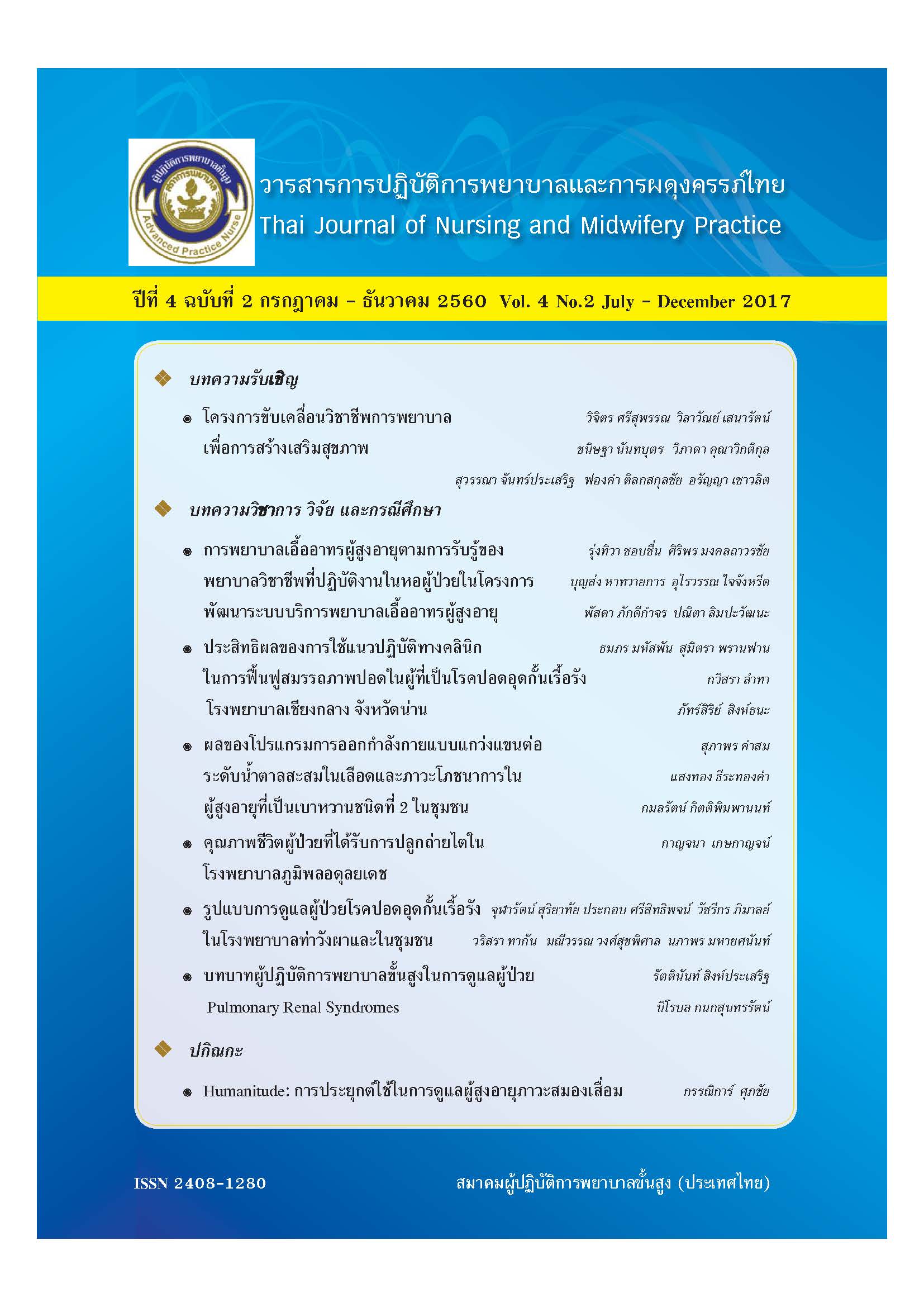EFFECTS OF ARM SWING EXERCISE PROGRAM ON HbA1C AND NUTRITIONAL STATUS IN COMMUNITY DWELLING OLDER ADULTS WITH TYPE 2 DIABETES
Main Article Content
Abstract
This experimental research, randomized two group pre-posttest design, was aimed at studying effects of arm swing exercise program on blood sugar and nutritional status of older adults with type 2 diabetes. Participants met inclusion criteria, were randomly divided into two groups: an experimental group with 21 patients receiving arm swing exercise program for 12 weeks; and a control group with 23 patients receiving routine nursing care. Data collection was conducted twice, before and after the intervention, using two self-report questionnaires including a demographic and perceived exercise self-efficacy, blood test for HbA1C, waist circumference and body mass index (BMI). Data were analyzed using descriptive statistics, Paired t-test and Independent t-test.
Results revealed that after the arm swing exercise program, the experimental group had significantly lower average of HbA1C and waist circumference compared with before the program (p = .037, p = .000, respectively). Mean scores of perceived exercise self-efficacy were significantly increased compared with before the program and with control group (p = .004, p = .000, respectively). However, average of HbA1C, waist circumference and BMI in the experiment group were not significant different with the control group. Therefore, the arm swing exercise program should be applied for older adults with type 2 diabetes in order to decrease HbA1C, waist circumference and BMI for preventing diabetic complications.


